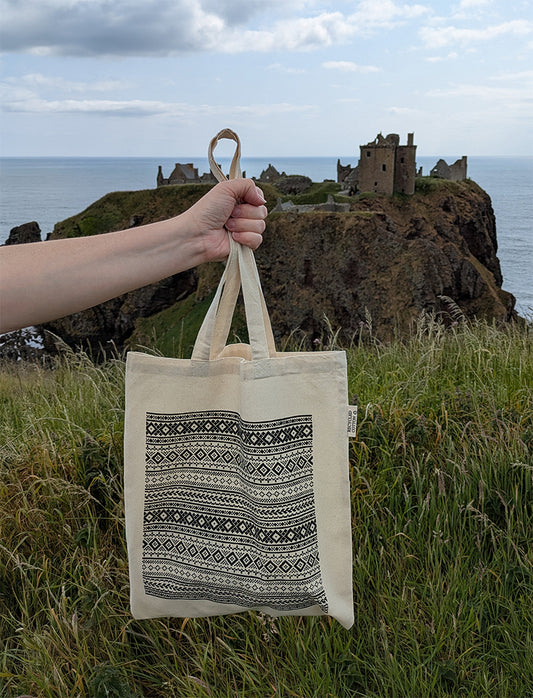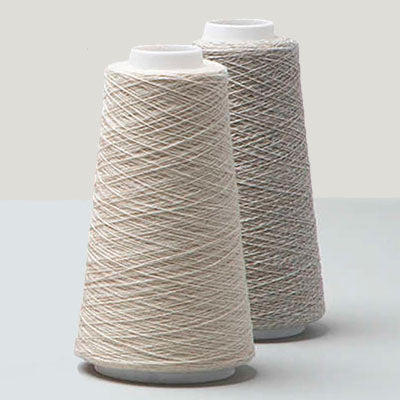
Natural Wool Yarns - What are they?
We love using natural yarns to make our knitwear. We use 100% wool fibres with no man-made (synthetic) fibres added to them. They have been adapted by nature to provide fantastic temperature-regulating properties. These help produce a garment which is warm yet breathable due to moisture-wicking properties, and can also keep you cool by ensuring you don’t overheat. They also have anti-microbial properties meaning fabrics are odour free so need minimal washing.
Here are some FAQs we get asked:
What is Merino wool?
Merino wool is wool which comes from a particular breed of sheep called the Merino. It has a very high-quality wool which is thought to be one of the finest and softest of any wool. These animals are farmed particularly in the Southern Hemisphere in countries such as Australia.
What is Geelong wool?
Geelong is a city in the state of Victoria, Australia. It gives its name to a very special type of Merino wool. Traditionally this was the fine, first fleece produced by the Merino lamb. This ultra-fine lambs wool is thought to be the softest you can get and rivals cashmere in its luxurious, soft, silky feel. Only a small portion of Merino wool can be graded into this super fine category meaning it is a highly sought-after fibre. The long fibres of this wool give it a strength that you would not expect from such a soft wool. People who can struggle with wool sensitivity are often able to wear Geelong without a problem.
The Geelong lambswool we use is produced by a mill who are Responsible Wool Standard (RWS) Certified.
What is the difference between Merino wool and lambswool?
Lambs wool can come from any sheep breed and refers to the age of the sheep when it is clipped. This young fleece is the softest the animal will produce and is about 5cm long at the time. Merino comes from a particular breed of sheep and can refer to wool from any age of animal, not just lambs.
What is the softest wool?
Merino wool is very soft as it is finer (smaller in diameter) than other breeds of wool, even lambswool. The softest of all is therefore Geelong – the finest of Merino.
What is the warmest wool?
Wool fibres have a natural wave known as a crimp. This shape means that air is trapped between the wool fibres in tiny air pockets which act as an insulator. The structure of wool also allows it to absorb up to 30% of its own weight in moisture without feeling wet – a physical and chemical process which also generates warmth.
Wools which have a more pronounced crimp and have a structure which allows more air to be trapped are the warmest. These wools don’t need to be heavy, and in fact are often remarkably light in weight.
If however you are looking for an even warmer wool, then choose knitwear made from a thick yarn. Generally wool used for knitwear is composed of 2 strands of yarn twisted together (2-ply). However, we also use 6-ply yarn which is three times as thick – this produces a very warm jumper.
What is cashmere made of?
Cashmere comes from the Cashmere goat which is native to the Inner Mongolia region. These goats have a double coat consisting of a straight, coarse outer coat and an inner soft and fine under coat, which insulates the animal. Cashmere wool is produced from the under coat. The finest cashmere is combed from the goat as it is being naturally shed. Cheaper cashmere can be made from the fleece of shorn goats and this grade of fibre contains more of the coarse outer hairs.
The cashmere we use is of the finest quality and produced by a mill which is part of the Sustainable Fibre Alliance (SFA) that are working to minimise environmental impact, safeguard herder livelihoods and meet high animal welfare standards.
Are there any other types of natural wool yarns?
Wool can also be produced from the coats of other animals such as Alpaca, Possum, Angora wool from the Angora Rabbit and Mohair from the Angora Goat. We don’t use any of these alternative yarns in the collection.


